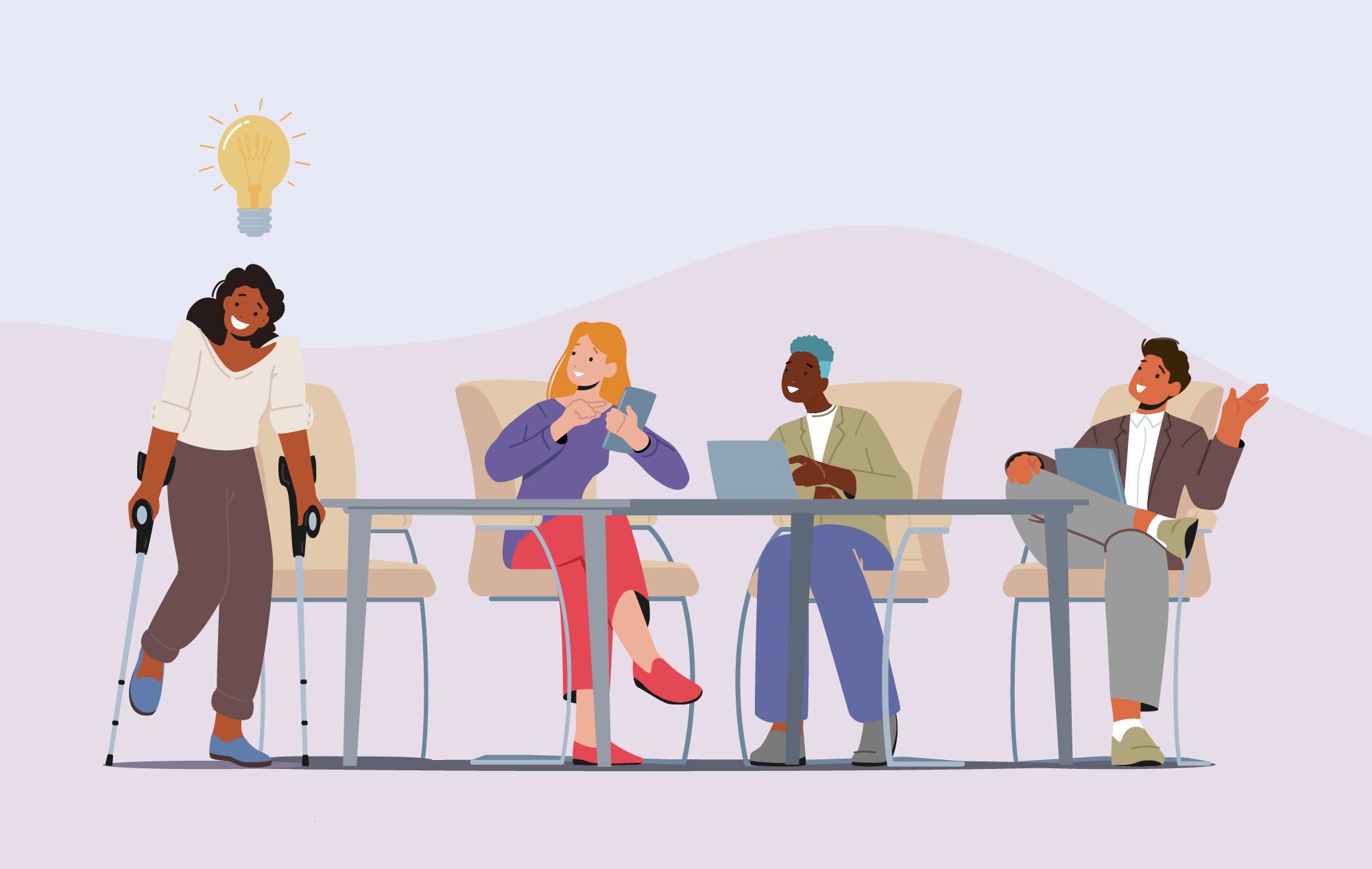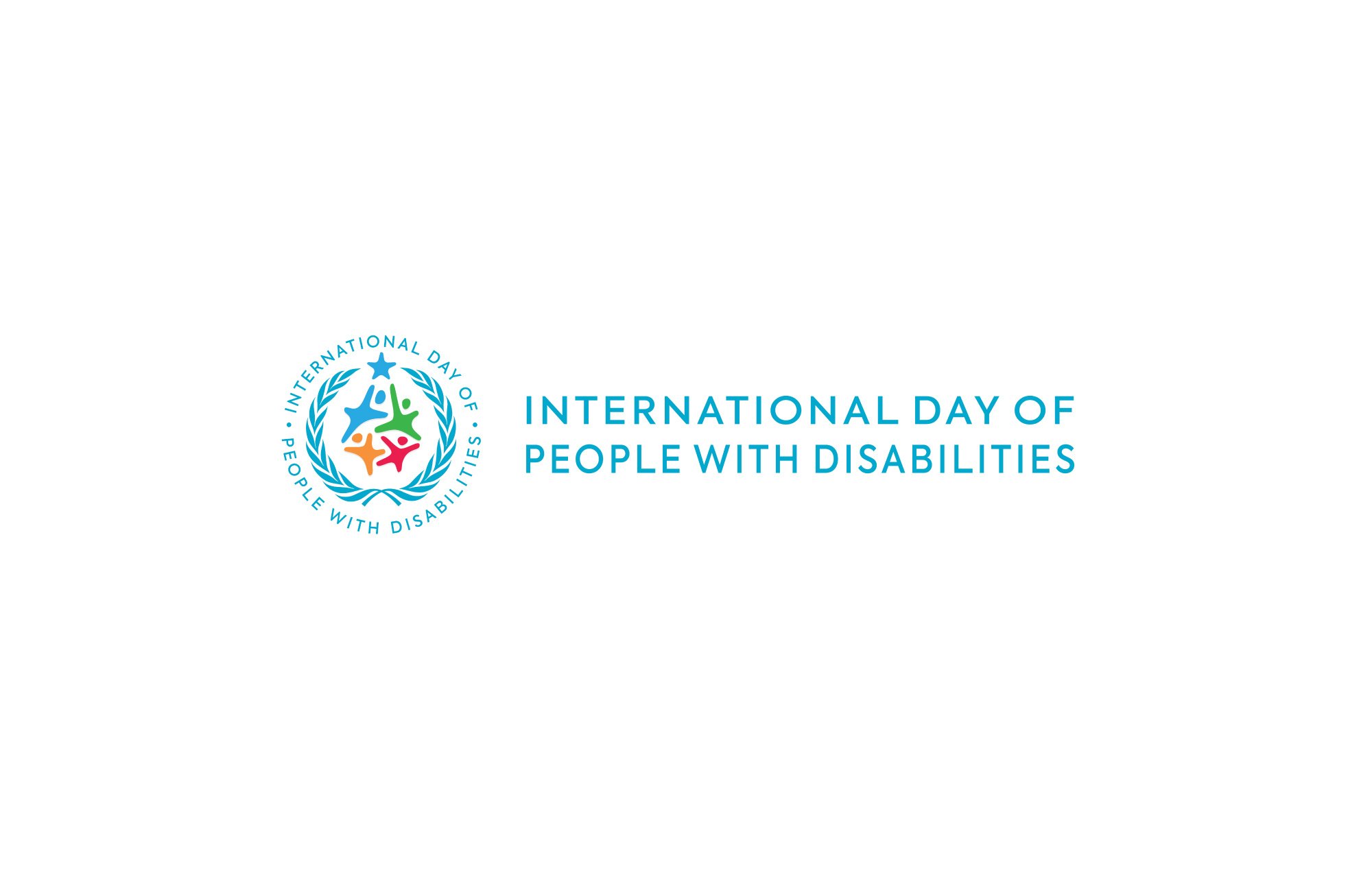For many organizations, cultivating a diverse workplace is a source of immense pride. However, creating an inclusive environment where individuals from all walks of life feel genuinely welcomed and appreciated goes beyond the conventional notion of accommodating those from diverse backgrounds.
This is particularly important when addressing the invisibility often imposed upon people with disabilities, especially those whose experiences are not readily apparent.
To that point, recent data from the Centers for Disease Control and Prevention (CDC) indicates 12.8 percent of American adults have a cognitive disability characterized by serious difficulty concentrating, remembering, or making decisions.
Additionally, the nonprofit Learning Disabilities Association of America (LDA) notes that one in five Americans experiences learning and attention issues, citing research from the National Center for Learning Disabilities (NCLD).
Despite this, misconceptions and stereotypes about individuals with cognitive and learning disabilities (CLD or neurodivergence) persist. These include perceptions of neurodivergence as an abnormality or that people experiencing CLD aren’t intelligent or lack the ability to learn.
Consequently, a large portion of people with such disabilities are shut out of the workforce despite their abilities and potential for contribution: Only 46 percent of working-age adults with learning disabilities are employed, and twice as likely to be jobless as their “able-bodied” counterparts.
However, in addition to meeting legal requirements or social responsibility goals, a diverse and inclusive work environment helps drive productivity and innovation. This is due to greater employee satisfaction, grounded in inclusive experiences where differing talents are valued. Thus, creating accessible workplaces catering to the needs of all employees一including those with cognitive and learning disabilities一is essential.
Here are several actionable measures for making workplaces more accessible and inclusive for employees with cognitive and learning disabilities. (You can also find similar guides to better support employees who are blind, d/Deaf, and experience mobility impairments.)
Understanding Cognitive & Learning Disabilities
Cognitive and learning disabilities vary in their nature and impact. They result from genetic or neurobiological factors that alter brain functions related to processing information or learning. This can negatively affect basic skills such as listening, reading, writing, or performing mathematical calculations. They can also interfere with higher-order skills such as organization, abstract reasoning, time planning, long or short-term memory, and focusing attention.
Learning disabilities are also distinct from learning challenges related to visual, auditory, or motor disabilities, emotional disturbance, or environmental disadvantage.
According to the LDA, people with learning disabilities are of average to above-average intelligence yet are often unable to demonstrate their expected skill set. In effect, their disability is invisible because there often appears no obvious explanation for the divide between their intellectual potential and tangible accomplishments.
Common types of cognitive and learning disabilities include dyslexia, dyscalculia, dysgraphia, dyspraxia, attention deficit hyperactivity disorder (ADHD), certain types of autism, non-verbal learning disabilities (NVLD or NLD), executive functioning, oral/written language disorder, and specific reading comprehension deficit.
Challenges Faced by Employees With CLD
People with CLD often experience difficulties with skills fundamental to most employment, such as organization, time management, written communication and comprehension, and memory and information processing.
It’s no surprise, then, that misunderstanding, stigma, and feelings of low self-esteem often prompt students and workers to keep their CLD hidden. According to the NCLD, only one in four college students with CLD disclose their disability to their institution, and only one in 20 young adults with CLD receive accommodations in the workplace.
Kurt Iobst, Senior Success Manager at Salesforce and Global President of Neurodiversity AbilityForce, says disability disclosure is a personal choice.
“I encourage people to do what makes them most comfortable,” says Iobst, who himself is autistic. “If they feel they will gain more understanding and not suffer repercussions, then disclosure could be appropriate.”
Regardless, employers and colleagues need to be aware of these challenges and offer the necessary support and accommodations to facilitate the success and well-being of their coworkers.
The Role of Leadership & Management
Aside from successfully leading multi-billion dollar companies, Richard Branson, Virgin Group Holdings Limited board chairman; Daymon John, founder, president, and CEO of FUBU and a regular investor on the reality show “Shark Tank;” and David Neeleman, founder, CEO, and chairman of Breeze Airways (previously Founder, CEO, and Chairman, JetBlue) all share something else in common. Each has a cognitive or learning disability一and there are many more like them.
Creating an inclusive workplace culture starts with leadership and management. By disclosing their own neurodivergence, leaders are living proof people with CLD can be enormously successful. They also set the tone for tolerance, acceptance, accessibility, and inclusivity within their organizations.
Iobst shares that sentiment, noting that “leadership that openly discloses their disability, struggles, and success strategies helps foster empathy and understanding throughout the organization.”
Leaders also control the allocation of resources for accessibility initiatives and training programs (more on this below). A strong commitment in these areas, and from the highest echelons of an organization, reinforces the fact that people with CLD are valued employees.
Communications and HR teams also have roles to play. Messaging in company news, policies, and initiatives for internal and external audiences should reflect the organization’s commitment to diversity and inclusion, including discussion and imagery of its multifaceted workforce, goals, and accomplishments.
Importantly, these policies should be visible to potential candidates and those in the hiring process.
Employee Training & Education
Educating all employees about cognitive and learning disabilities is crucial for cultivating a collective sense of empathy and appreciation for the challenges and talents employees with CLD possess.
Regular training via awareness programs, workshops, and seminars can help debunk misconceptions and nurture a learning-first workplace. Introducing and practicing strategies for effectively supporting and accommodating employees with neurodivergence can reassure all involved.
In short, the more CLD is discussed in an organization, the more it’s normalized as a contributor to the richness of its diversity.
Establishing Support Networks & Resources
Creating support networks and providing access to resources can significantly benefit employees with cognitive and learning disabilities. This can involve establishing employee resource groups一such as Iobst’s Abilityforce一offering mentoring programs and providing access to external support services and networks.
Some companies even provide access to external, third-party neurodivergent coaches. These professionals work with neurodivergent employees on strategies to create a more positive and productive workplace experience. It’s important to note that whether an employee works with a coach is confidential and not disclosed to the company or its other employees.
Creating an Accessible Work Environment
In addition to building a culture of inclusion, organizations can further support their employees with CLD by using various on-the-ground tactics. Here are just a few.
Assistive Technologies & Tools
While cognitive and learning disabilities are unique to each person, many employees with CLD face similar accessibility challenges. For example, tools to help with reading, which is a common struggle among people with CLD, include screen readers, text-to-speech software, speech recognition technology, and noise-canceling headphones.
Other tools include the following:
- Alternative input devices, such as specialized keyboards or mouse alternatives, can help those who have difficulty with standard methodologies.
- Graphic or mind-mapping organizers and note-taking apps to assist in structuring ideas and thoughts.
- Time management and visual timetable apps for keeping on schedule, meeting deadlines, and accomplishing tasks.
- Calculator and math manipulatives apps to help in problem-solving and visualization for math-related tasks.
- Digital voice recorders to enable users with memory challenges to record meetings, presentations, or other occasions.
- Color overlays and filters for digital screens to reduce visual discomfort for employees with visual processing difficulties.
Digital Accessibility
The Americans with Disabilities Act (ADA) outlaws discrimination against people with disabilities (PwD) in public life, such as employment, transportation, public accommodations, and communications一including in digital spaces.
That said, many PwD, including those with CLD, find the web challenging to navigate. According to the 2019 survey The Click-Away Pound Report, seven out of 10 UK residents said they have abandoned a website due to its inaccessibility. Moreover, 86 percent of respondents expressed their willingness to increase spending (on an e-commerce site) if they encountered fewer barriers.
Improving the digital experience for employees with CLD makes their work environment more supportive and empowers everyone to be more productive. The World Wide Web Consortium (W3C) Web Accessibility Initiative administers the Web Content Accessibility Guidelines (WCAG), the recognized standard for digital accessibility best practices. WCAG covers several topics that can improve the digital experience for people with CLD, such as:
- Helping users understand site features and functions
- Improving navigation to make tasks and features easily discoverable
- Using clear, comprehensible content with easy-to-understand language
- Limiting distractions to bolster focus.
Flexible Work Arrangements & Accommodations
Flexibility is critical when accommodating employees with cognitive and learning disabilities. Offering less rigid work arrangements, such as remote work or adjusted hours, can help individuals manage their neurodivergent challenges more effectively.
For others, routine plays an outsized role in providing a comfortable and positive work environment. Avoiding changes to the work schedule and environment enables employees with CLD to feel secure and confident in their work.
Similarly, flexibility in communication styles can make a big difference, Salesforce’s Iobst explains.
“Easing rigid communication rules that often don’t make sense to the neurodivergent community enables us to thrive at a basic human level,” Iobst says.
“Allowing [employees with CLD] to communicate in ways that work best for them is key一whether that be asynchronous communication, like using Slack, or turning off the camera on video calls,” he adds.
Teamwork & Collaboration
Encouraging open communication and fostering a culture of respect and patience can create an inclusive environment where all employees feel valued and heard, including those with CLD.
“I always encourage neurodivergent employees to create a personal user manual that outlines how that person works best. It can include things like, ‘times when I’m most productive,’ or ‘these types of things cause me friction,’” says Iobst.
He underscores that disclosing a disability is not a requirement:
“At no time does [a neurodivergent employee] need to share their disability to do these things,” Iobst adds.
In a collaborative workplace一whether in the office or at the company picnic一each team member contributes their unique strengths and skills to the projects at hand. This includes individuals with cognitive or learning disabilities who can also showcase their abilities in areas where they excel.
When undertaken consistently, these approaches often benefit organizations with a motivated workforce, pride in project ownership, and a collective sense of accomplishment.
Evaluating Progress & Making Adjustments
Finally, creating accessible workplaces for employees with cognitive and learning disabilities is not only a legal and ethical obligation but also a source of immense benefits for organizations. But, like anything else, it takes time. Regularly evaluating progress is central to ongoing improvement.
Organizations should seek employee feedback, conduct accessibility audits, and adjust policies, practices, and physical environments to ensure continued progress.
In this way, organizations can create environments where all employees can thrive and contribute to their full potential, break down barriers, challenge misconceptions, and build truly inclusive workplaces.
InclusionHub is a crowd-sourced, online resource directory seeking to raise awareness about Diversity, Equity, Inclusion, and Belonging (DEIB), digital accessibility, and other vital issues. To learn more or be a part of this extraordinary pursuit, contact us today.






Leave a Comment